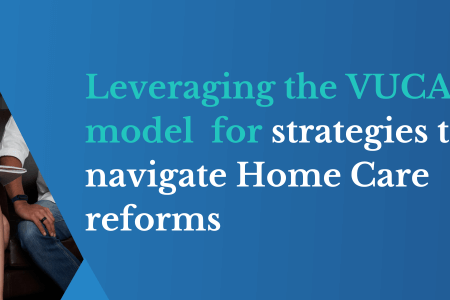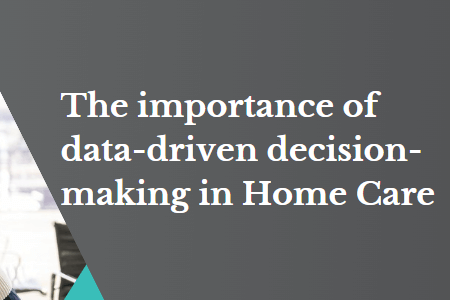What we know about Support at Home so far
November 15, 2024 | Aged Care Reform

By Taran Minhas, Senior Consultant
As aged care reforms evolve, staying informed about changes to programs like Support at Home can feel overwhelming, especially amid the demands of daily operations. Navigating new requirements, understanding key updates, and finding reliable information takes time and focus.
To support your journey, we’ve compiled a list of essential resources, articles, and insights to keep you up-to-date on the Support at Home program. Bookmark this page as we’ll continue updating it with the latest developments to help you stay well-prepared.
Whether you’re actively involved in home care, considering it, or simply seeking to understand the aged care landscape better, these resources are here to guide you through each step. And if you ever need a hand, Mirus is here to help you make a seamless transition.
Comprehensive resource list for the Support at Home program
- Care Sector Demand Map: This resource provides a detailed map of the demand for aged care services across different regions. It helps identify areas with high demand for aged care services, which can be crucial for workforce planning and resource allocation.
- Latest Home Care Package waitlist: The number of people waiting for a Home Care Package increased from 68,000 in May this year to 76,000 as of 30 September 2024, a jump of 12%.
- Survival of the efficient: This article explores the competitive landscape for home care providers and common operation results for home care operators, emphasising the importance of efficiency and adaptability in the evolving market. This article reports on the latest in financials for the sector: In FY24, the StewartBrown Aged Care Financial Performance Survey Sector Report found home care providers’ operating result decreased by 38 cents per client per day to $2.76 pcpd in FY24, down from an operating result of $3.14 pcpd in FY23, according to the survey of more than 71,000 Home Care Packages. Profits margins declined from 4.5% in FY23 to 3.5% for FY24, due to increased labour costs.
- Support at Home pricing: In case you’ve missed it, there’s been a lot of debate around the pricing model for the program which IHACPA has been seeking consultation on. We will be keeping a close eye on the outcomes of the consultation. Here are some key links for documents:
- The Consultation Paper,
- Department’s Fact Sheet, and
- The Service List.
- The dollar figures in this table are current estimates. Final classification dollar values will be set towards the end of the 2024 calendar year.
- Support at Home program handbook: The much awaited handbook is finally here. Latest FAQs document is available here too.
- Quality Indicators for home care: The Department have engaged HealthConsult to run a 12-week pilot from early October 2024 to test the proposed quality indicators. The pilot will see most data collected through two validated quality assessment tools produced by Flinders University/Caring Future Institute: the Quality of Life-Aged Care Consumers (QOL-ACC) and the Quality of Care Experience – Aged Care Consumers (QCE-ACC). This article takes a critical look at the quality indicators used in home care, discussing the shortcomings of current survey tools and the impact on care quality assessments. Approximately 150 service providers have been recruited for a 12-week pilot. Following this critical phase, data will be analysed and assessed to determine which indicators are the most “relevant, usable and feasible”. A final recommendation will be presented to the Department of Health and Aged Care in late February.
- Cuts in care management funding potentially threatens quality: One of the many articles out there discussing the potential impact of funding cuts on the quality of home care services, with insights from providers on the why.
- Single Assessment System workforce: Department has said that from late 2024, ACAT, RAS and AN-ACC workforces will transition into the Single Assessment Workforce to deliver the Single Assessment System. From the little information available, we know that the Single Assessment System will eventually replace the:
- Regional Assessment Service (RAS) – used for the Commonwealth Home Support Programme
- Aged Care Assessment Teams (ACATs) – used for:
- the Home Care Packages Program
- the Short-Term Restorative Care Programme
- residential respite
- entry to residential aged care
- independent Australian National Aged Care Classification (AN-ACC) assessors – used for residential aged care funding.
Complaints About Aged Care Services – Year in Review 2023-2024
A regular report from the Aged Care Quality and Safety Commission reviewing complaints about aged care services over the past year, highlighting common issues and areas for improvement.
As providers of aged care, it is important to understand the information that comes from complaints and feedback. This is not just numbers, but key information about the experiences of older people receiving care. By analysing this data and thinking about key issues, you can:
- identify opportunities to improve
- make sure you are being transparent through open disclosure
- take steps to improve the quality of your care.”
10. Aged Care Bill 2024 – Senate Inquiry and Report
An article discussing the concerns about price controls in the Support at Home program, with insights from the latest Senate inquiry.
If you need help with the transition, contact us today to ensure a smooth and successful journey.


